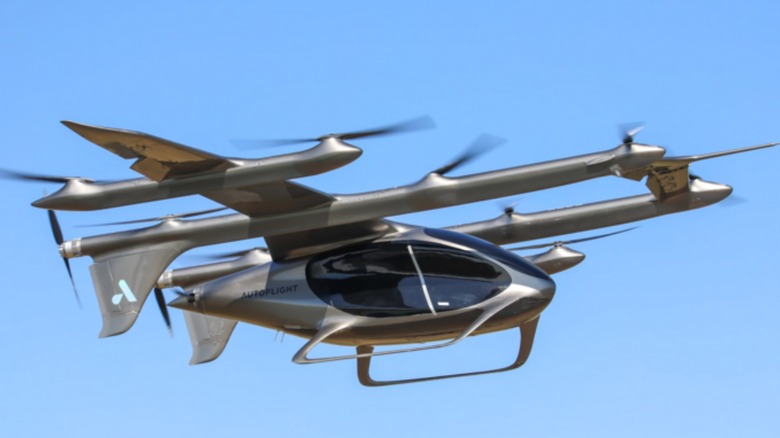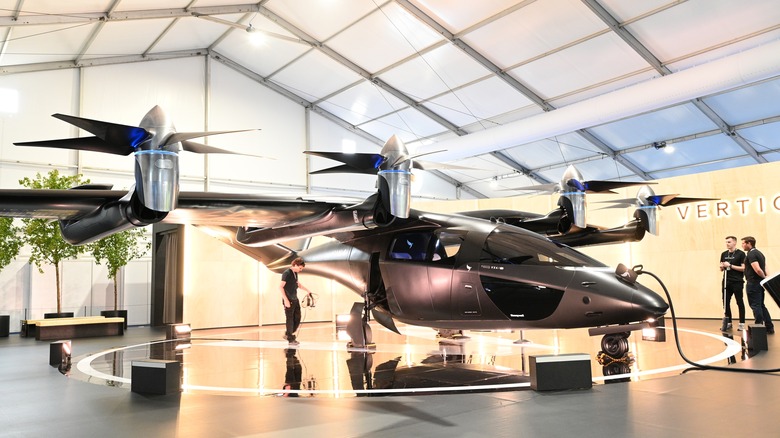This Futuristic Air Taxi Just Set A New Record For Longest eVTOL Flight
AutoFlight's latest Generation 4 prototype of its "Prosperity I" eVTOL (electric Vertical Take-Off and Landing) aircraft conducted a test flight on March 2, 2023, and appears to have bested Joby Aviation's flight test from July 2021. The Generation 4 eVTOL was flown 250.64 kilometers, or 156.65 miles on a single charge, according to AutoFlight.
"This flight is both a great celebratory milestone and a testament to the team's incredible effort and progress in testing and incrementally pushing the aircraft's performance envelope," AutoFlight's president Omer Bar-Yohay said of the test, which took place at the Chinese company's Augsburg site in Germany.
The 156 miles covered by the vessel far exceeds what earlier prototype mockups aimed to achieve. In 2010, NASA was working to develop the "Puffin," a personal lightweight aircraft that was powered by twin electric motors that combined to produce 60 horsepower. The Puffin would have sported an effective range of about 50 miles.
The AutoFlight Generation 4 eVTOL aircraft, on the other hand, utilizes quiet propellers that have been designed with urban flight operations in mind. It achieves vertical lift through the use of 10 lifting rotors, and maneuvers with three additional propellers. The Prosperity I can also carry a maximum payload of around 900 pounds, far exceeding the roughly 200-pound total capacity of the Puffin.
The company looks to manufacture the Prosperity I in its Chinese factory with a unit price of about $150,000 — in comparison to competitor that cost as much as $1.5 million per eVTOL delivered.
For the eVTOL, range is a key factor in adoption
The marketplace for eVTOL aircraft is an exciting one. The concept of a "flying car" has remained in the public conscience for decades. The first flying car designs actually predated the Wright Brothers' aircraft success. Then, in 1917, Glenn Curtiss built an aluminum vehicle he dubbed the "Autoplane," which sported three wings measuring 40 feet across. The craft never achieved true flight, but it did make it off the ground.
Later, pioneering designs advanced into prototype and developmental stages in the 1940s and 1970s, but these flying automobiles never became a viable roadworthy option. However, with the new push to develop electric aircraft, consumers are once again looking to the skies for local traversal.
The battery capacity and effective flight range of an eVTOL will be the biggest selling point. Studies suggest that air taxis, light cargo operations, and air ambulance mobility will be the three biggest use cases for these vehicles when they become widespread. All three of these specialized users will require substantial range and the ability to leave the charging port behind at a moment's notice.
Emergency medical services, in particular, can't wait for the aircraft to finish charging. Likewise, a taxi that's been hired by a rider simply must complete its route from dispatch, to pickup, to drop off, and back again without failure. AutoFlight's new range beating test flight expands the limits of what's possible in this exciting and innovative technological realm.

